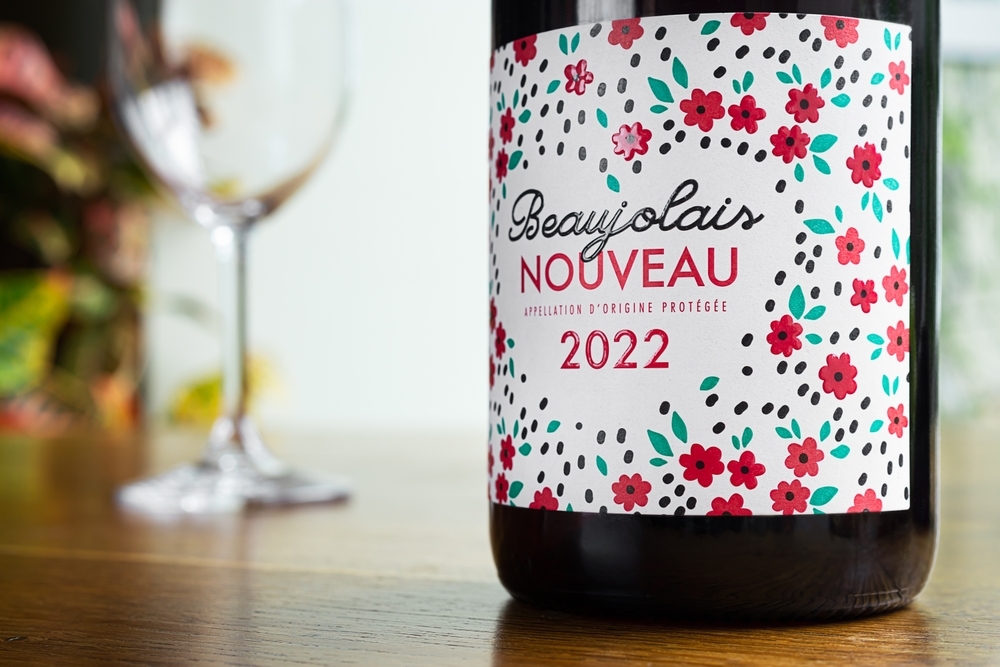Flavor with the Perfect Pairing Of White Wine with Beef

Pairing wine with food has always been crucial to enhancing the dining and drinking experience. For years, the consensus has been that red wine should be paired with beef, while white wine is reserved for lighter dishes like chicken, fish, or salads. But the culinary world is vast, innovative, and always evolving, with chefs and sommeliers pushing boundaries to redefine flavor pairings.
White Wine with Beef
Many white wines boast high acidity, which acts as a palate cleanser, cutting through the richness of meat and leaving you with a clean, light finish. The trick is selecting a white wine with enough body and complexity to stand up to the bold flavors of beef and pairing it with a suitable beef dish to ensure both components complement each other.
Learn More: The Ultimate Guide To Food And Wine Pairing Ideas
White wine pairs exceptionally well with beef dishes that involve lighter preparations—think grilled beef, beef salads, or beef served with lemony or mustard-based sauces. The result is an elegant, nuanced pairing often missed with the more traditional red wine and beef combination.
Benefits of Beef and White Wine
Balancing the Fat of Beef
One key element that makes white wine an excellent partner for beef is its ability to balance out the meat's richness. White wines, particularly those with high acidity, like Sauvignon Blanc or Riesling, provide a bright contrast that cuts through the beef's fat and richness. This keeps the meal from feeling too heavy and prevents the palate from becoming overwhelmed by the meat's fattiness.
Enhancing Flavor Complexity
White wines often have fruity, floral, or mineral notes, bringing out new flavors in beef dishes. For instance, pairing a citrusy or floral white wine with a grilled steak can add brightness to the dish, while a creamy or full-bodied white wine like Chardonnay can bring out the beef's savory, umami flavors. This type of pairing allows for a more complex and layered flavor experience.
A Lighter Alternative to Red Wine
While red wine’s boldness makes it a natural match for beef, not everyone enjoys its intensity or tannic structure. White wine offers a lighter, refreshing alternative, making it ideal for those who prefer something less heavy on the palate. This is particularly true in warmer months, when people may not want to drink heavier red wines. White wine makes the meal light and airy, even with a substantial beef dish.
Improving Digestion
The acidity in white wine is not just good for flavor; it’s also beneficial for digestion. Just as a squeeze of lemon on a fatty dish can aid digestion, a sip of acidic white wine helps break down the fats in beef, making the meal easier on the stomach. This can leave you feeling less bloated and sluggish after the meal.
Health Benefits
When consumed in moderation, beef and white wine offer health benefits. Beef is a powerhouse of nutrients, providing essential proteins, iron, and zinc. On the other hand, white wine, like its red counterpart, contains antioxidants that have been shown to promote heart health, reduce the risk of certain diseases, and even combat inflammation. Combining the two creates a delicious and health-conscious pairing that can be enjoyed guilt-free.

Pairing the Best White Wine with Beef
Chardonnay with Grilled Ribeye
A full-bodied, oak-aged Chardonnay with buttery, creamy notes pairs excellently with grilled ribeye steak. The char from the grill enhances the oakiness in the wine, while the wine’s acidity balances out the steak’s richness. Serve the ribeye with a garlic herb butter sauce, and you’ll have a pairing that feels indulgent yet balanced.
Sauvignon Blanc with Beef Carpaccio
The crisp acidity and citrusy notes of Sauvignon Blanc work beautifully with the delicacy of beef carpaccio. The wine's fresh, zesty profile lifts the raw beef’s subtle flavors, especially when topped with olive oil, lemon, and capers.
Viognier with Beef Tenderloin
Viognier’s floral, aromatic qualities and slightly oily texture pair nicely with a juicy beef tenderloin. The wine’s fruit-forward profile complements tenderloin cooked with creamy sauces or topped with mushrooms. This pairing works particularly well when the beef is seared but served medium-rare.
Check This Out: Taste the Magic: A Wine And Food Pairing Ultimate Guide
Pinot Grigio with Beef Tacos
With its light and refreshing profile, Pinot Grigio pairs surprisingly well with beef tacos, especially those seasoned with cumin and chili. The wine’s bright acidity cuts through the beef’s spice, while its clean finish refreshes the palate between bites.
Riesling with Spicy Beef Stir-fry
A slightly off-dry Riesling is an excellent match for a spicy beef stir-fry. The wine’s sweetness balances the dish's heat while its acidity refreshes the palate. Riesling’s stone fruit notes complement the beef’s savory, caramelized flavors.
Grüner Veltliner with Beef Salad
Grüner Veltliner is known for its peppery and citrus-driven profile, making it a perfect companion for a beef salad. Pair it with arugula, roasted beef strips, and a light vinaigrette, and you’ll have a fresh and balanced meal.
Champagne with Roast Beef
Champagne's enthusiasm pairs well with roast beef, particularly when the beef has crispy, caramelized edges. The bubbles and acidity of Champagne act as a palate cleanser, cutting through the beef's savory richness.
Fumé Blanc with Braised Beef Short Ribs
Fumé Blanc, a smokier version of Sauvignon Blanc, has the body and complexity to pair well with the earthy flavors of braised beef short ribs. The wine’s smoky notes mirror the deep, rich flavors of the slow-cooked beef, making for a harmonious pairing.
Chenin Blanc with Beef Tartare
The high acidity and fruit-forward profile of Chenin Blanc work beautifully with beef tartare. The wine’s citrus notes highlight the freshness of the raw meat, while its subtle sweetness balances the dish's richness.
Gewürztraminer with Beef Stroganoff
Gewürztraminer, with its aromatic and slightly spicy profile, complements the creaminess of beef stroganoff. The wine’s floral and exotic spice notes provide a lovely contrast to the dish’s richness.
Tips for a Healthy Beef and White Wine Pairing
Choose Leaner Cuts of Beef
When pairing with white wine, opt for lean cuts of beef like filet mignon, sirloin, or tenderloin. These cuts are lower in fat and calories but still deliver the flavor and texture that make beef so satisfying. Leaner cuts also allow the wine to shine without being overwhelmed by the meat's richness.
Cook with Healthier Fats
Instead of using heavy butter or cream-based sauces, prepare your beef with healthier fats like olive or avocado. You can also use citrus-based marinades or vinaigrettes, which add brightness to the dish and complement the acidity of the white wine.
Incorporate Fresh Herbs and Vegetables
Adding fresh herbs like thyme, rosemary, or cilantro, as well as vegetables like asparagus or spinach, can enhance the nutritional profile of your beef dish. Not only do these ingredients add flavor, but they also provide vitamins, antioxidants, and fiber. White wine pairs beautifully with these flavors, especially those with herbal notes.
Practice Portion Control
Keep your portions moderate when enjoying a rich beef dish with white wine. A smaller portion of beef, paired with vegetables and a light sauce, will still provide a satisfying experience without overloading on calories or fat. You’ll also be able to savor the flavors of the wine without feeling too full.
Choose Dry White Wines
For a healthier option, stick to dry white wines with lower sugar content than sweeter varieties. Wines like Sauvignon Blanc, Chardonnay, or Grüner Veltliner are lower in calories and sugar, making them a better choice for those looking to limit their intake.
Also Read: Spice Up Your Nights with Perfect Wine Pairing With Tacos
Conclusion
Pairing white wine with beef is an exciting way to elevate your dining experience. You can create a balanced and flavorful meal that surprises the palate by experimenting with different combinations and following simple health-conscious tips. If you want to break the mold of conventional wine pairing and explore new flavors, you’re in for a treat.
This content was created by AI
No keywords available
-1717753922-r.jpg)


